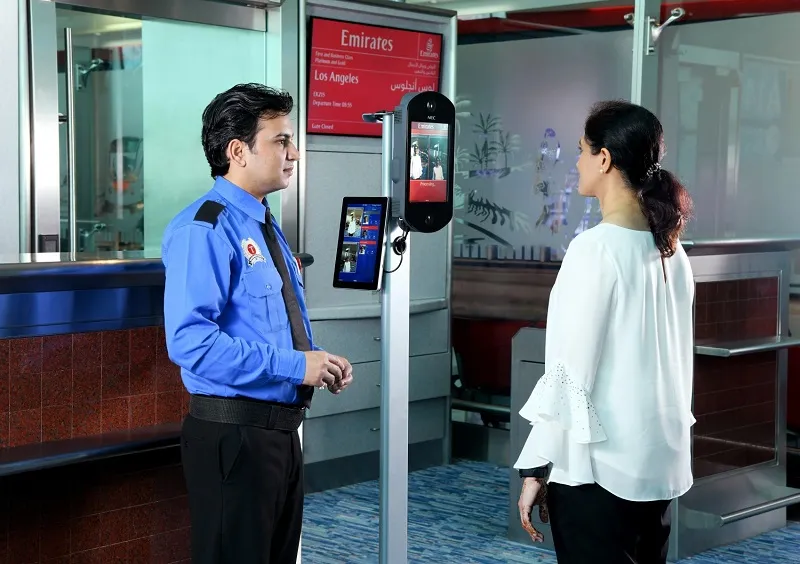
Emirates gets US nod for biometric boarding
Sep 23, 2019

Emirates Airlines has received approval from U.S. authorities to implement biometric boarding processes, enhancing the travel experience for passengers. This innovative system leverages facial recognition technology to streamline the boarding procedure, allowing travelers to board flights more efficiently and with minimal physical contact. The initiative is part of a broader push towards digitization and improved security in air travel, aligning with post-pandemic health measures. By integrating biometric solutions, Emirates aims to reduce wait times, improve passenger flow, and provide a seamless journey from check-in to takeoff, setting a new standard in airline operations and customer service.
Emirates has recently received approval from the United States government to implement biometric boarding processes at various airports. This innovative technology is set to enhance the travel experience for passengers by streamlining the boarding process, making it quicker and more efficient. The integration of biometric boarding aligns with Emirates' commitment to leveraging advanced technology to improve customer service and operational efficiency.
What is Biometric Boarding?
Biometric boarding is a cutting-edge method that uses facial recognition technology to identify passengers as they board an aircraft. This system captures a passenger's facial features and compares them to their identification documents, such as passports, to verify their identity. The main advantage of this system is its ability to significantly reduce boarding times and enhance security.
Benefits of Biometric Boarding for Travelers
The introduction of biometric boarding by Emirates offers numerous benefits to travelers:
- Faster Boarding Process: With biometric verification, passengers can board the aircraft without the need to present their boarding passes multiple times, leading to a smoother and faster boarding experience.
- Enhanced Security: Biometric technology adds an additional layer of security by ensuring that the person boarding the aircraft is indeed the ticket holder.
- Improved Passenger Experience: By reducing wait times and simplifying the boarding process, Emirates aims to enhance overall passenger satisfaction.
Implementation Timeline
The rollout of biometric boarding will take place in phases. Emirates plans to begin implementation at key US airports, with the goal of expanding the technology to additional airports worldwide. Below is a table outlining the projected timeline:
| Phase | Airport | Expected Launch Date |
|---|---|---|
| 1 | Los Angeles International Airport (LAX) | Q1 2024 |
| 2 | John F. Kennedy International Airport (JFK) | Q2 2024 |
| 3 | Chicago O'Hare International Airport (ORD) | Q3 2024 |
How Biometric Boarding Works
The biometric boarding process involves a few straightforward steps:
- Check-In: Passengers check in using the Emirates app or at airport kiosks. During this process, their facial data is captured.
- Verification: At the boarding gate, passengers approach a biometric scanner. The system captures their facial image and matches it with their stored data.
- Boarding: Once verified, passengers are granted access to the aircraft, reducing the need for manual checks.
Challenges and Considerations
While the biometric boarding system presents numerous advantages, there are also potential challenges to consider:
- Privacy Concerns: The collection and storage of biometric data raise questions about passenger privacy and data security.
- System Reliability: The effectiveness of facial recognition technology can be impacted by various factors such as lighting, angle, and even changes in appearance.
- Technological Integration: Airports and airlines must ensure that their existing systems can seamlessly integrate with the new biometric technology.
Future of Biometric Technology in Aviation
The approval for biometric boarding is just the beginning of Emirates' journey into the future of air travel. As the aviation industry continues to evolve, biometric technology is likely to play an increasingly prominent role. Other areas where biometrics could be integrated include:
- Check-In Processes: Expanding biometric verification to check-in, baggage drop, and security clearance.
- Customs and Immigration: Utilizing biometric data to expedite customs and immigration processes.
- Loyalty Programs: Personalizing passenger experiences through enhanced data collection and analysis.
Conclusion
Emirates' approval for biometric boarding from the US government highlights a significant advancement in the travel industry. By embracing this technology, Emirates aims to enhance the travel experience while maintaining high standards of security and efficiency. As the airline prepares for implementation in 2024, travelers can look forward to a new era of seamless air travel, driven by innovation and technology.
Related Articles

Explore Thailand: The Best Islands to Visit for Paradise, Adventure, and Relaxation

The Ultimate Guide to the Best Islands in Thailand for Your Next Getaway

Do babies need passports? How to get a passport for a newborn

How to get a U.S. passport fast: here’s how to expedite the process

What is Mobile Passport Control: 5 reasons why you should use it

SENTRI vs. Global Entry: A detailed guide

Do you need a passport to go to the Bahamas? Let’s find out

Do you need a passport to go to Mexico? A detailed guide

Do you need a passport to go to Canada? We got the answer

Do You Need a Passport for a Cruise: An Essential Travel Guide

Booster Seat Requirements: All the Rules to Follow in Your Rental Car

What Are the World’s Most Powerful Passports, and How Does Yours Rank?

How to Take a Passport Photo at Home: A Helpful Guide

You've got to have heart! Southwest's new livery

Your opinion: Should water be free on low cost carriers?

Young women bolder than guys as solo travellers
